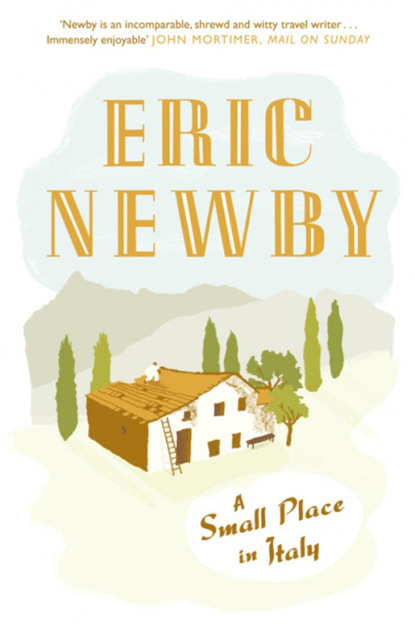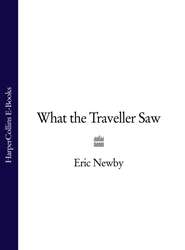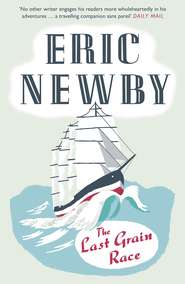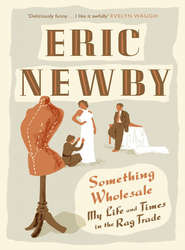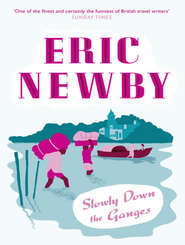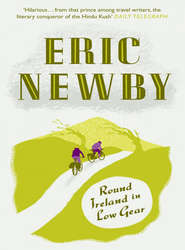По всем вопросам обращайтесь на: info@litportal.ru
(©) 2003-2024.
✖
A Small Place in Italy
Автор
Год написания книги
2018
Настройки чтения
Размер шрифта
Высота строк
Поля
In the autumn of 1967 I went to Africa to visit the game reserves, then the latest craze, and write about lions who took siestas in trees, and other wonders, as Travel Editor of the Observer.
While I was there Wanda sent me an express letter from Italy which somehow contrived to arrive in a couple of weeks when a month was around par for a letter from there whether it was sent express or not.
In it my Slovenian, who likes to keep things stirred and on the boil, wrote that what she had feared was now beginning to come to pass. The prices for houses anywhere near the sea in northern Italy were beginning to go up and it would only be a short time before houses in the depth of the countryside would follow suit. ‘Unless we do something quickly we shan’t be able to buy anything at all,’ she concluded on an appropriately pessimistic Slavonic note.
Spurred into action by this cri I flew from Africa to Italy instead of back to London and eventually came to a halt in a place called Tellaro, where Wanda was staying in a tower, originally built as a lookout against roving Saracenic pirates who used to come ashore on these Mediterranean coasts in search of livestock for the north African harems.
This tower was the property of Wanda’s friend, Valeria, with whom she had worked in 1943. Tellaro is near Lerici on the shores of the Ligurian Sea, at the mouth of the Gulf of Spezia, where Byron went for a six-mile swim. At that time (in 1967) it was still a fishing village, an almost unbelievably picturesque one, that looked as if it had been designed by Rex Whistler, and it was still inhabited by fishermen sufficiently genuine to roll out of bed every morning at 4 a.m., except Sundays, or even earlier, and put to sea, making a hideous din.
In summer a cool breeze blew up from the sea through Tellaro’s dark and cavernous streets, filling the gleaming white bed sheets that were drying on the lines stretched high overhead between the opposing houses as if they were spinnakers that were drawing nicely. But not always. When the scirocco, a nasty wind from Africa, blew, bringing torrential rain, thunder and lightning along with it, what had been magical, mysterious caverns became deep, dank ditches full of water, then Tellaro was not so allegro.
For Tellaro and a number of similar places on the shores of the Mediterranean, that autumn was the beginning of what was soon to be a period of extraordinarily rapid change and transition.
One moment Tellaro was a fishing village with a few artists hidden away in it; the next it had been ‘discovered’ by senior people in Fiat and Olivetti and suchlike organizations, who saw it as an ideal place in which to immure their wives and families during the long Italian summer, less boring than Forte dei Marmi. A place to which they could drive down from Turin or Ivrea, or wherever it was, on Friday evenings in a couple of hours or so, driving back on Sunday nights to the embraces of those of their mistresses who could stand August in such places as Turin or Ivrea, or wherever it was they were returning to.
Within a year or two smart little fish restaurants would be springing up around Tellaro’s minute piazza, opened by locals who soon became ‘characters’, the sort who treat their clientele with carefully cultivated insolence, a sort of treatment the rich and powerful, rather surprisingly, seem to enjoy, turning them into suppliants.
And in a couple of years or so most of them would have either grown rich by selling their houses or plots of land, or else, more modestly contented, would be doing well working in the bars and restaurants, and in the souvenir and picture postcard shops.
A member of one of these local families, by this time very elderly, whom we happened to meet, was a still sprightly lady who had known D.H. Lawrence and Frieda von Richthofen. They had come to live in Italy in September 1913, returning in July 1914 to England, where they were married. In Italy they rented a house in a small seaside hamlet between Tellaro and Lerici called Fiascherino. Every day this signora, then a young signorina, used to walk along the coast path through the olive groves to Fiascherino, where she used to do the Lawrences’ housework and sometimes the cooking.
‘I called him Signor Lawrence,’ she said, the ‘ce’ as a soft ‘che’. ‘He was very thin and he had a beard. He looked as I imagined Gesù would look. And he enjoyed the wine.’
‘Signor Lawrence,’ the Signora said, ‘had a wife. She was a German, a nobildonna. She was simpatica. Then, suddenly,’ she said, ‘they went away. We didn’t know where.
‘One of the things they left behind them was a big trunk full of papers and a key to it. They never came back for it. There was no money in it, only papers.
‘Then, one day, I can’t remember when exactly, a signore, a foreigner, I think he was an American, came to our house, I was married then, and said that he was a friend of Lawrence and that he had been given permission to take some papers from the trunk, so I let him do so.
‘Then, one day, many years later, another signore appeared, also a foreigner. He said that Lawrence was dead and he, too, took papers from the trunk, all that remained.
‘You may think I was stupid to let them have these papers,’ she said, ‘but they were all written in English or German and there was no one at that time in Tellaro who could understand them. The words were difficult words.’
The Signora lived in La Canonica, The Presbytery, a fine old house in Tellaro, in an apartment on an upper floor. She wanted us to buy it because, she said, she liked us; but for us it was too high up and too dark. Also it had no garden, not even a balcony or a terrace to sit out on. So we didn’t buy it. But when we told her that we couldn’t buy it she cried a little and then gave us as a parting gift two silver spoons with the arms of the von Richthofen family engraved on them.
Inspired by all this we began to look for our house as soon as I arrived from Africa. It soon became obvious that it was not going to be easy. What had up to then looked like desirable properties immediately ceased to do so when we began to look at them more closely.
It took ages to locate most of them. Sometimes we felt like travellers in a desert in which the mirage was operating. What looked like a desirable place at a distance ended up by being perfectly awful when we actually got to it, or else, as with a genuine mirage, unfindable, a figment of the imagination. Some were nice but too near the road, some had no outlook, some had outlooks, but very gruesome ones, some were too ruined, too lonely, too frequented, too noisy or too expensive.
We soon decided to abandon completely the search for anything near the sea. Neither of us had wanted to be near it, anyway. The only reason for being near it was that it would have been nice to have found a place near Tellaro, where Valeria and her husband lived.
We got an introduction to a surveyor, a Signor Anselmo. He was tall and slim and nice to talk to and he lived in an apartment block in Lerici. Surveyors seemed to us to have enviable lives. All they did was to tell their customers that the places of their dreams were riddled with dry rot, or were built on the lines of geological faults and were likely to disappear into the bowels of the earth without warning. ‘You may think you need a surveyor,’ an American resident in Lerici told us, ‘but you need one like you need an attack of the hives.’
No, Signor Anselmo didn’t know of any property that would suit us down here on the coast. He advised us to go inland, even a few kilometres inland. Inland it was different, he said, but it was outside the area in which he operated. He did, however, know someone who might be able to help us, a Signor Vescovo who owned a bar/ristorante. Signor Anselmo kindly offered to telephone him.
Later that morning we presented ourselves at Signor Vescovo’s bar/ristorante. Signor Vescovo was smallish, slightly rotund, aged between forty and fifty and wore thick, tortoiseshell glasses. Was it his name, Vescovo, which means bishop, that invested him with a faintly priestly air?
He, himself, as he told us, was in the process of selling his business and was at present engaged in negotiating the purchase of a large farmhouse somewhere near a place called Fosdinovo, across the river Magra in the foothills of the Apuan Alps, which he was proposing to convert into a ristorante specializing in wedding receptions and anniversaries, in which the food on offer would be what is known in Italy as produzione propria (home produced). According to Signor Anselmo, Signor Vescovo knew more about the buying and selling of properties in this particular area than anyone else.
‘There is one house that I think you would like very much,’ he said as we drank a coffee with him. ‘It is on the side of the hill just above the place where I am trying to buy the farm. It is rather ruined and it only has about two thousand square metres of land but it is a pretty place and very quiet. It belongs to a Signor Botti, a contadino who lives at a place called Caniparola, a small village at the foot of the hill. I think he might be persuaded to sell it as it doesn’t render anything except a bit of wine and a small amount of olive oil; but like all contadini he needs time to make up his mind.
‘If you would like to see it,’ he went on, ‘I can arrange it for this afternoon. I will send a message to the Signora who has the key to it by the local bus, telling her that you will come at whatever time you say. I will also write down the instructions about how to get to the house which is called I Castagni [the ‘I’ pronounced as in ‘E’] – The Chestnuts.
‘And if you are wondering why I am not going to charge you anything, even if you buy the place, it is because I owe a favour to Signor Anselmo.’
THREE (#ulink_249ea49a-f6da-5500-abd0-b19cccb5d4a6)
After once more becoming imbrangled in the labyrinthine one-way street system of Lerici, we followed Signor Vescovo’s painstakingly written instructions about how to get to I Castagni, and crossed the river Magra by a long, multi-arched, brick bridge. Below it, strung out along its gravel banks, a number of despairing-looking men were fishing without apparent success as they, or their descendants, continued to do for all the years we lived in the area.
Beyond the river we followed the Via Aurelia, one of Italy’s more dangerous roads, to Sarzana, an ancient, walled town on the borders of Tuscany. Here we entered the Plain of Luni, the site of what had been Luna, an important Etruscan city and seaport which Livy described as being ‘the first city of Etruria’ and Strabo as having one of the finest and largest harbours in the world, much of its prosperity being because of the marble trade.
But in the fourth century AD its decline began, brought on by the malaria which eventually rendered it more or less uninhabitable. It was subsequently sacked many times: by the Lombards, by the Normans in the ninth century and by the Arabs, who finally destroyed it and carried its inhabitants into captivity in 1016. Both city and seaport disappeared from history some time in the twelfth century, killed off by the malarial mosquitoes, and became an area largely populated by ghosts and goats. Now all that remained of it was an amphitheatre that once seated six thousand spectators and a theatre. It was Luna that gave its name to what is now the present region of Lunigiana, although originally it was much larger.
Then, after a couple of miles, we turned off on to a minor road at a place called Ponte Isolone, a hamlet on the Via Aurelia made up of some half a dozen buildings which included a café, a seed merchant, an ironmonger’s and a shoe shop, all of which, except for the shoe shop, which never had anything in our sizes, we subsequently patronized.
Once on this minor road the roar of traffic on the Via Aurelia became a faint murmur and we found ourselves, as if by magic, in rural Italy. It led away, dead straight in a northerly direction, to where the foothills of the Apuan Alps rose steeply from the plain. Rising above them, deep blue in the distance, were their big peaks, the highest of which, Monte Pisanino, is 1945 metres high, with what looked like snow fields on their flanks. These were the ravaneti, great screes of glistening white marble, debris from the quarries above Carrara.
We had, in fact, although we didn’t know it at the time, left Liguria at Ponte Isolone and were now in Tuscany, in the province of Massa Carrara, a narrow strip of it not much more than a mile wide, salient with the road running up the middle of it and with Liguria on either hand. High on the hillside there was a long-abandoned customs house, on what had been a frontier.
Here, on what was good, alluvial farmland, olives and vines and maize and wheat flourished, and in the lower parts of the foothills lived what had been mezzadri, crop sharers, dependants of the ancient Malaspina family, who at one time had enormous possessions. The family owned the towns of Carrara and Massa Carrara until the middle of the eighteenth century and had a palace and a castle in the latter, and another castle in Fosdinovo up on the hill in the direction we were now going, which was acquired in 1340 by Spinetta Malaspina. Other rich landowners also had mezzadri, who originally gave half their produce to the landowner in exchange for the use of the land and their dwellings, but by the 1960s they received 58 per cent of the proceeds. Those employed by the Malaspina used to live in humble and, by the standards of the time in which they were built, decent, now picturesque farm buildings, many of them built as late as the 1900s by the Conte Malaspina, as a marble plaque displayed in a prominent position on the outer walls of each of them testified.
The majority of these, and the other farm buildings, were rendered in the standard colour for Italian farmhouses almost everywhere except the mountains, known as sangue di bue (oxblood), which grows paler and paler as the years pass until it ends up a very pale pink.
Many of these mezzadri had begun to work on the land when they left school at the age of eleven after five years of scuola elementare, an educational system that endured until the last war. At the time when we bought I Castagni in 1967, the mezzadria system was still functioning in some parts of Italy and there were still numbers of contadini who were more or less, if not totally, illiterate, and could only make a cross on paper instead of writing their names. Today, most of the occupants of the farmhouses are salaried agricultural workers.
Now we were passing a vast and beautiful villa, also rendered in sangue di bue, built by the Malaspina in the eighteenth century at Caniparola, a comparative rarity in what had always been, since the coming of the malaria, and until the development of the Riviera della Versilia in the second half of the nineteenth century, a poverty-stricken part of Tuscany.
It was not only the malaria that the inhabitants had to contend with. Besides having to put up with the already mentioned Saracenic pirates who whisked their womenfolk away, they had to endure being trampled underfoot by an almost endless procession of foreign armies, which used what was a much-trodden route over the Apennines from the valley of the Po and then down the valley of the Magra, on their way south to despoil Rome and other attractive places en route.
What the natives in these northern parts of Tuscany needed to survive such irruptions were not villas but castles, the more Gormenghastian the better, preferably situated on inaccessible crags, and such fortresses were built in considerable numbers. Because of this comparatively few purely domestic villas were built where we now found ourselves. Here, at Caniparola, the hamlet near which the Malaspina villa stood, the road ran past a little chapel, embellished with marble obelisks, in which the family used to attend mass when they were in residence, and passed under an imposing brick archway, part of what had been a huge stable block. The lower parts of the building were plastered with posters announcing incredibly boring decrees, printed in full, or what was going on with the local pop groups. It was a great year for pop, 1967, the year of Sergeant Pepper.
Having passed under the archway, unless the road had made two violent turns, first to the left, then to the right, we would have run straight into the façade of what was to prove to be a rather good, very rustic inn, the Trattoria all’Arco.
Because of this man-made hazard the driver of almost every vehicle ascending or descending the hill, when confronted with it, felt constrained to sound his horn, what for a late twentieth-century Italian was the equivalent of crossing himself, at the same time going into a screaming gear change.
If the vehicle happened to be a bus, one of the service which operated between Sarzana and Fosdinovo, then the sound of the horn at close quarters was unbelievable. It was therefore not surprising that the Arco was a rather noisy place at which to eat in the open air.
Beyond it the road began to climb the hillside – at that time Caniparola was a very small place with no modern buildings at all, apart from one or two post-First World War ones – winding its way upwards in a series of hairpin bends, through fields planted with vines and olives, passing old farmhouses all painted in various shades of sangue di bue.
As we climbed we began to have fleeting views of other places, such as Castelnuovo di Magra, a hill town across the valley to the right which had a castle rising above it. Confronted with what seemed an endless succession of these bends, all of them more or less identical, with what looked like identical vineyards and olive groves sandwiched between them, we began to wonder if we had passed the track which led to the house we had come to see; but on this matter Signor Vescovo’s instructions had been explicit, and we would have had to be barmy to make a hash of them.
‘After a farmhouse on the left of the road with a vineyard in front of it in which the vines are supported on stone columns, the only such ones in the zone, you come to the seventeenth bend.
‘Beyond this,’ he continued, ‘you pass on your right a food shop, a butcher’s shop and a communist cell with a hammer and sickle over it.’ (This was a branch of the Italian Communist Party which, by that time, had passed the peak of the popularity it had enjoyed in the 1950s and early 1960s, epitomized in Guareschi’s Piccolo Mondo di Don Camillo.) But in spite of it now being closed, probably for ever, we always called it ‘The Cell’ because it sounded more exciting than a branch.
‘Then, after the eighteenth bend, you will see, a hundred metres or so up the hill, a tall solitary cypress, from which a rough track leads off to the left.
‘This track,’ he wrote, ‘leads down to a small house. In it lives a widow, a Signora Angiolina. She has the keys of the property and she is expecting you at three o’clock.’





